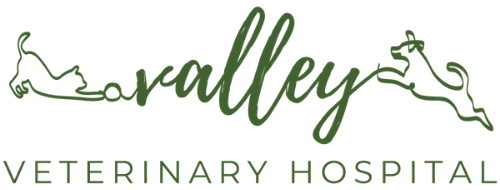Pet Surgery and Dental Care in New Milford, CT
Making sure our patients remain safe during surgery and other medical procedures is extremely important to us.
Pet Anesthesia
Many pet owners are apprehensive about placing their beloved pet under anesthesia, whether for a routine procedure or a life-saving procedure. Our entire staff at Valley Veterinary Hospital, on the other hand, is committed to your best friend’s health and safety while in our care, and we employ a range of monitoring systems to keep a careful eye on your pet and ensure their anesthetic event is as safe as possible.
Anesthetic monitoring equipment that is commonly used
The most common anesthetic monitoring devices include:
- Pulse oximeter – A pulse oximeter probe monitors the oxygen percentage in your pet’s blood and tells us their pulse rate.
- Blood pressure cuff — The most convenient way to measure systolic, diastolic, and mean arterial blood pressure is with an oscillometric blood pressure monitor. The artery catheter and ultrasonic Doppler procedures are also used.
- Electrocardiograph (ECG) — Electrocardiography (ECG) is a procedure that involves attaching three leads to your pet’s skin in order to gather rapid, real-time information on heart rate and rhythm. An ECG records the electrical activity of the heart and can detect arrhythmias, which signal cardiac abnormalities.
- Licensed veterinary technician (LVT) – The most crucial monitoring device is a licensed veterinary technician (LVT). They serve as your pet’s eyes, ears, and hands, ensuring that he or she is pain-free, comfortable, and safe during anesthesia and recovery. An LVT has finished college courses on anesthesia monitoring and potential complications, and they’ll keep a close eye on your pet for any problems and intervene if necessary.
- Along with these fundamental pieces of veterinary monitoring equipment, a blood gas analyzer, temperature probe, esophageal stethoscope, capnograph, respirometer, and blood pressure transducer are all accessible to assist us keep a close eye on your pet’s vital signs during anesthesia. Each pet undergoing anesthesia receives our full, undivided attention as we closely monitor their monitoring devices and rely on our own hands, eyes, and ears to keep your best buddy safe and well.
Do you have concerns about putting your pet under anesthesia for surgery? We’ll be pleased to answer any of your questions or concerns if you contact us!
Pet Dental Care
Although most pets with painful dental disorders do not show obvious clinical signs to their owners, this does not mean they are not in pain. They are unable to communicate their pain to you. In the wild, animals hide signs of illness or weakness, and pets have the same instinct.
Many painful dental disorders develop over time in middle-aged and older pets, and they are more common in them. As a result, the owner’s cranky conduct could be the result of oral pain. Owners frequently observe that their pet appears to be years younger after dental care.
Every time your pet comes our veterinary care, it is critical that we examine his or her mouth! It’s vital to check your pet for oral pain-causing diseases. Some dental and oral surgery treatments, such as extractions or even deep scrubbing of teeth, can be painful. We’ve been trained to address and prevent discomfort in your pet as a result of treatment. During the surgery, general anesthesia and local anesthetic blocks are used, as well as post-operative drugs if needed. Following treatment, a pain-free mouth enables a quick return to eating and other activities.
We must handle pain management actively because of our significant emphasis on and interest in pwt dentistry. What exactly does the word imply?
To us, it means anticipating the need for pain relief and employing a combination of pain medicines to reduce any discomfort or anxiety a patient may have as a result of a surgical treatment. This also necessitates a thorough understanding of anesthetic medicines, as we must have a well-balanced plan for both anesthesia and pain control.

